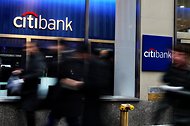The company continues to lose money, employees and gamers, who no longer want to play its games. Analysts soberly warn that Zynga desperately needs a series of new mobile hits to improve its profitability and restore some of the luster of its earlier years. Earnings reports in recent quarters have been dismal.
This quarter was no exception. The company reported that its revenue was down 18 percent from the year-ago quarter, results that prompted shares to slip in after-hours trading. Zynga’s number of daily active users, or people who logged into its games once a day, dropped 21 percent. However, it did report a small profit.
But the company hopes that a new game, which it is releasing Wednesday evening, will be the beginning of a new chapter — one flush with profits and praise from users — that will help it regain some of the footing in the gaming industry that it helped shape.
The new game is a sequel to Draw Something, the popular, turn-based drawing game that has entertained millions of players who sketched images for their friends in a modified, touch-screen version of Pictionary. Last March, Zynga paid $180 million to buy Draw Something, which was created by a New York start-up, Omgpop. Then it watched as players lost interest in the once popular game and took their time elsewhere.
Although the company says the game still has millions of users worldwide, it is betting that the new version will bring back former fans who had become bored.
The success of Draw Something 2 is more about salvaging the remains of an expensive acquisition. It is a crucial test to see whether Zynga can spin any of its former traction on the Web to mobile — essential if the company wants to remain relevant and continue as a competitive gaming company in the future.
Richard Greenfield, an analyst at BTIG, a global trading firm, said it is normal for players to lose interest, especially when there is no shortage of games across an assortment of consoles, phones, tablets and hand-held devices. None of the top games currently charting in the iTunes App Store are games developed by Zynga, he said, but rather by relatively unknown upstarts.
“Why aren’t those Zynga games?” he said. “Why can’t they make great hits on mobile? They are saying they are a mobile-first company and, yet, they haven’t been able to launch a hit mobile game.”
For the new game, Zynga added new drawing tools and accessories as well as features that make Draw Something 2 more closely resemble a social network, with buttons to allow them to share their creation on Facebook, Twitter and Instagram. In addition, users can find and follow other people who are playing the game, browse their shared drawings and “like” and comment on them.
Zynga has also enlisted celebrities on this version of the game, including the pop performers Will.i.am and Carly Rae Jepsen, so that their fans can see their drawings through the application as well.
“We want to reactivate people who played and loved Draw Something 1 but lapsed,” Travis Boatman, a senior vice president of mobile at Zynga, said in an interview at the company’s New York headquarters.
Zynga is going all out for the release of the new game, with a partnership with Universal Pictures around the coming animated film “Despicable Me 2” to show related advertisements in the game as well as base drawing challenges around the movie.
Caitlin Turosky, a marketing manager at Zynga, said advertising deals like that one had great potential. Zynga currently makes money by showing ads in the free versions of its games, by selling premium versions of its games and by allowing players to make in-app purchases. But eventually, Ms. Turosky said, the company could even show players advertisements based around the topics and objects they are sketching.
Zynga is also experimenting with games using real money, but those efforts are largely located in the United Kingdom.
In the company’s earnings report, it said it earned just a penny a share, or $263.6 million in revenue. During the same quarter of last year, the company reported revenue of $321 million. Even so, the company beat analysts’ expectations, who estimated that the social gaming giant would report revenue of $203 million and a loss of 4 cents a share. But Wall Street was unimpressed; the stock fell slightly in after-hours trading. The company also posted a modest profit of $4.1 million, compared with a loss of $85 million in the year-ago quarter.
“They’ve been going through a rough couple of quarters,” said Brian Blau, an analyst with Gartner Research who follows the company.
This article has been revised to reflect the following correction:
Correction: April 25, 2013
An earlier version of this article misspelled the name of a pop performer. Her name is Carly Rae Jepsen, not Carly Rae Jespen.
Article source: http://www.nytimes.com/2013/04/25/technology/after-disappointing-reports-zynga-bets-on-draw-something-2.html?partner=rss&emc=rss
